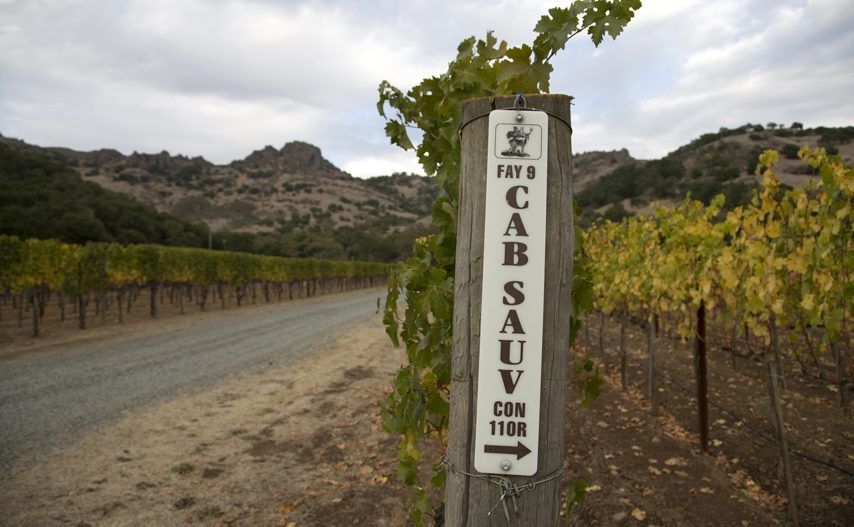Chief winemaker Marcus Notaro takes us through the new 2015 releases from Stag’s Leap Wine Cellars, explains the vintage characteristics plus gives an insight into how the wines are pure expressions of very different terrain.
It may be a cliché to call wines from Stag’s Leap Wine Cellars ‘an iron fist in a velvet glove’ but in this case with some of the wines and vintages it is the most perfect descriptor.
“The iron fist describes the power, the tannin, the structure, the richness and the body when you taste our wines. The velvet glove – that describes more the finish the softness and the suppleness. The balance is getting wines with richness and flavour but which also have elegance and finesse on the finish,” says Marcus Notaro, chief winemaker.
So how did 2015 compare with the previous three vintages in Napa?
“2015 was still a fairly dry year but a low yielding vintage – some 25% down – the key was the crappy weather we had during bloom… that is what resulted in fewer berries per cluster and smaller berries overall,” Notaro says
June through to August was fairly even and then the heat turned up in September.
“The 2015 wines are a little bit richer than say 2014 or 2012 but still not as powerful as 2013, 13 is still the power year for Napa Cabernet, the flavours are a little bit darker and riper.”
First to be tasted – Artemis – showing the diversity of Napa
“Artemis is the goddess of the hunt, the protector of the stag, but this wine is also a hunt around Napa Valley because we use some estate fruit but we also source fruit from other areas. Napa is so wonderfully diverse and this is supposed to be a celebration of that,” Notaro explains.

We use fruit from mountain areas like Atlas Peak, where grapes and the wines have a wilder quality and bigger tannins; Coombesville – that’s the cooler part of the valley that helps to add some fresh fruit to Artemis, some red fruit and nice bright acidity. We also look up valley as well to St Helena, Rutherford and Calistoga – it’s a little warmer up there so you get some darker fruit flavours in the Cabernet, softer, lusher tannins – so Artemis is a blend of fruit from all of those areas.”
The 2015 blend is 94% Cabernet Sauvignon, a bit of Merlot, Petit Verdot (1%) and a bit of Malbec.
“I’ll use those varieties if it makes the wine better,” Notaro laughs, “If Artemis has changed over the past 10 years it’s because the amount of Cabernet Sauvignon has been increasing.”
So what style is he trying to achieve with this wine?
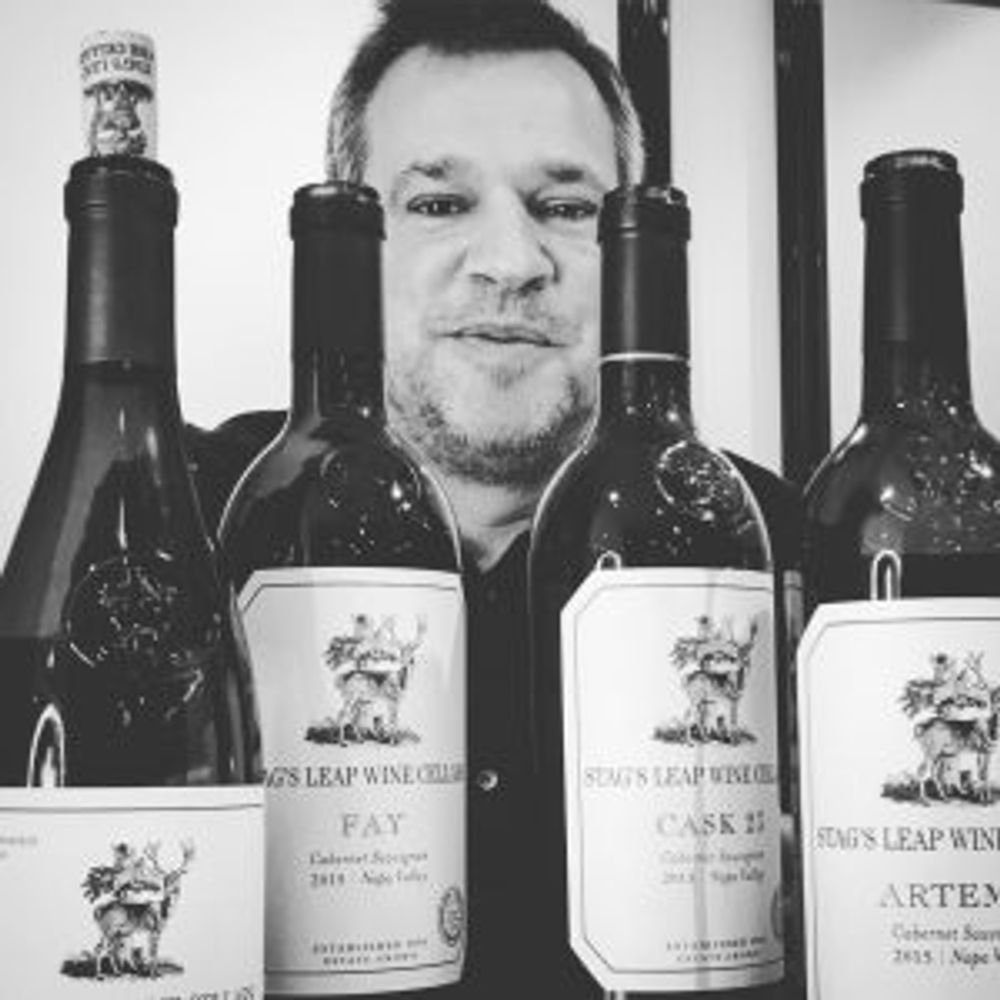
Marcus Notaro, M Restaurant, London 2018
“Complexity is important, I want to be able to show off the Cabernet Sauvignon. I love the currant aroma and flavour of Cabernet. I like the blue, red and dark fruits. In terms of mouthfeel and finish, I know ‘balance’ is an overused word, but that’s important. I want it to have some richness without being over the top-type style. It will also follow with the vintage so 2015 will have darker fruit characters.”
For the vinification, Notaro uses 40% new wood, 35% of which is new French (5% new American) and 2nd/3rd fill for the rest.
Stag’s Leap has produced 67,000 cases in 2025 (normally it would be 80,000). For reference, on average the winery produces 4,500 cases of Fay, and 3,000 cases each of SLV and Cask 23.
The key differences between Fay and SLV are down to the different types of soil they come from

Warren Winiarski planting the SLV vineyard
Stag’s Leap is a winery that was founded in 1970 by Warren Winiarski after he bought a 44-acre plot of land (next to a 66-acre vineyard owned by Nathan Fay) for the ‘princely sum’ of just under $200,000. He planted it out with Cabernet Sauvignon and this became the SLV vineyard. The Fay vineyard was later purchased in 1986 with the first bottle being released by Stag’s Leap in 1990.
Notaro picks up the story. “Both the vineyards are different, they are planted right next to one another so it’s not a climate difference it is a soil difference. Fay has been planted in soil that is older. There is a creek that runs North to South through the Stag’s Leap District and it’s the periodic flooding of this creek, particularly in the lower areas where the soil has been deposited from.”
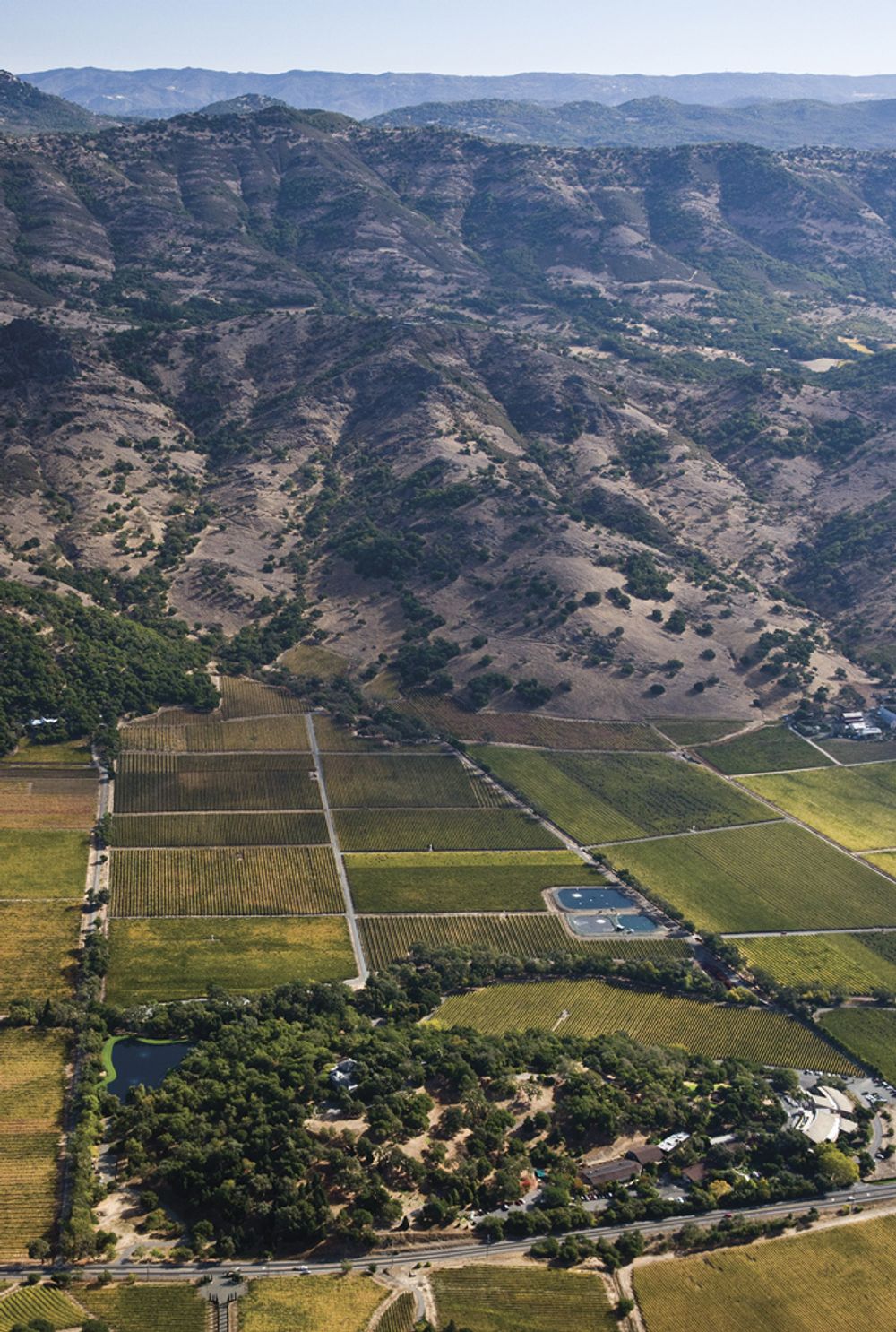
Stag’s Leap Wine Cellars with Fay and SLV vineyards
“Last winter we had a lot of rain and it’s always educational to get in the pickup truck and go see where your dirt comes from and, sure enough, there are little creeks that are running across Fay North to South. When you go into SLV there are rocky outcrops, that’s our bowl, and in these big rain events there are waterfalls bouncing across the rock and across Fay, freshly-eroded soil East to West.”
“Fay soil has a greyer colour to it, it’s more weathered, it was also eroded from those rocks, it’s more silty, has more of a clumpier feel to it. SLV is red, coarse, dusty and there’s more layers of rock that are in its soil.”
“That is the key difference to the wines’ personalities. Fay has got this perfumed character to it, cinnamon, more red fruit, bright berry pie, softer, more silky tannins whereas with SLV its personality is this dusty cocoa powder, blackcurrants, more black fruit and richer – in tannin structure.”
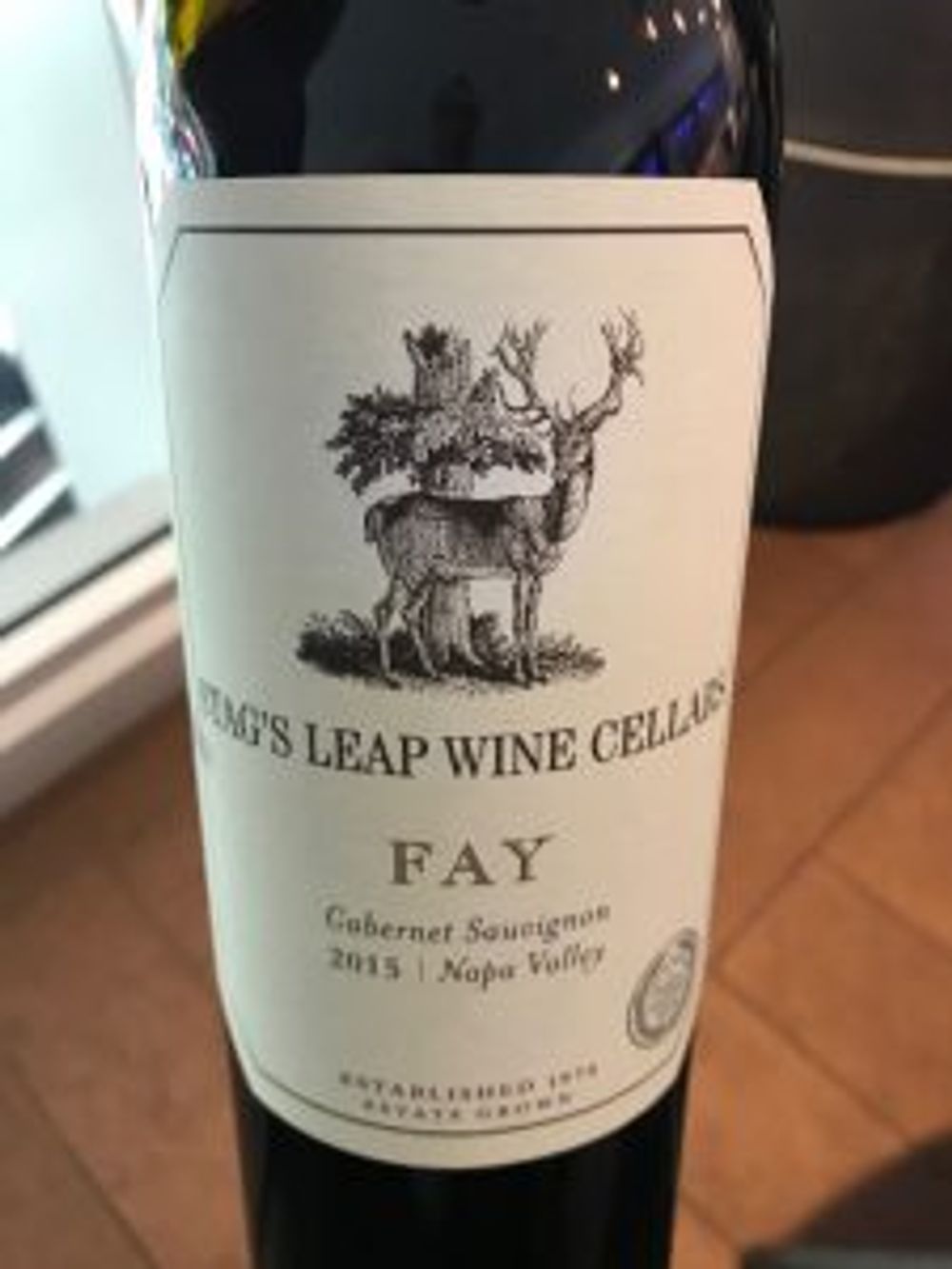
Notaro admits that he eschews science when deciding to pick and goes entirely on taste.
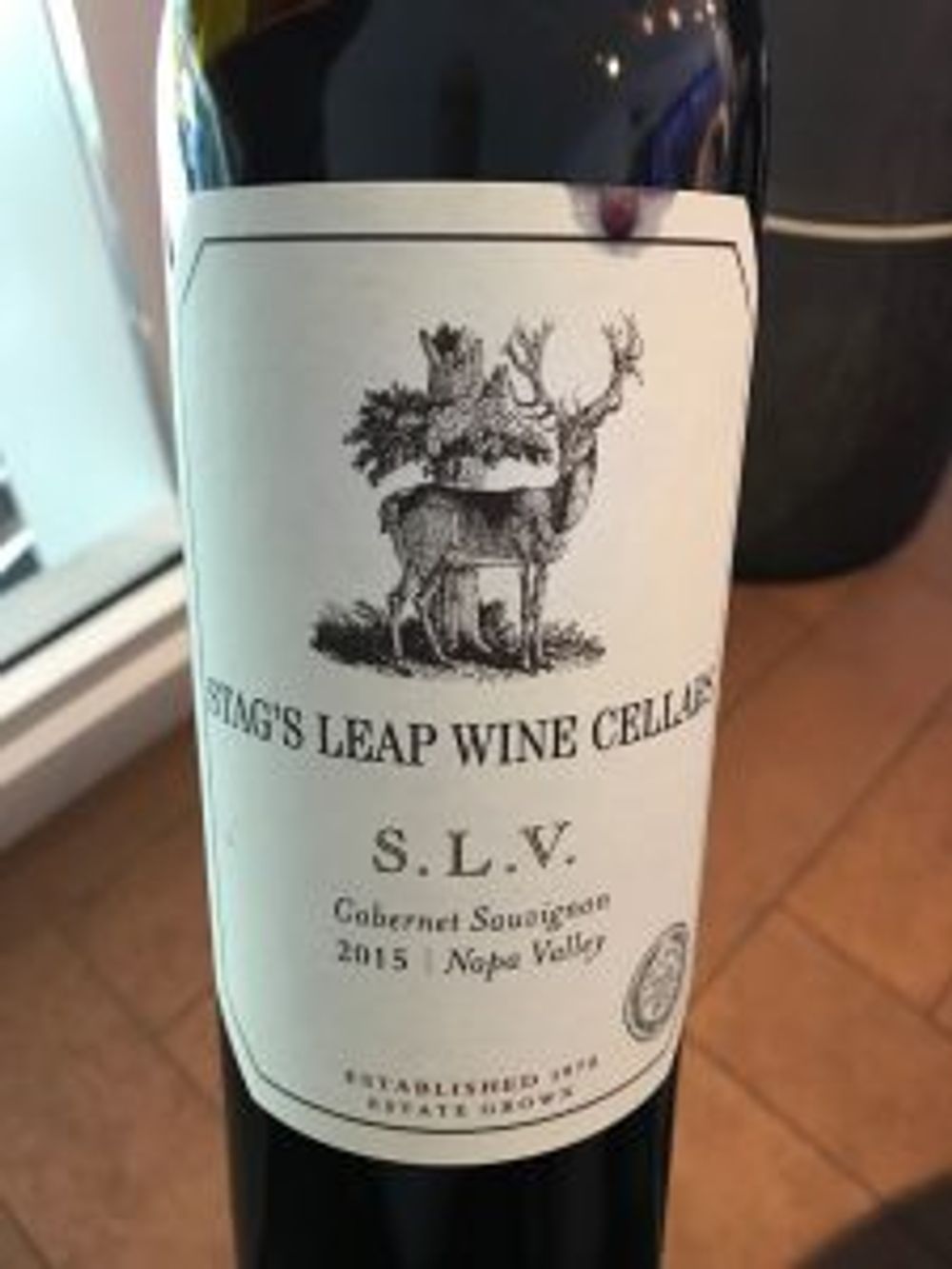
“I’m not a super technical winemaker – I go by taste – if I was to look I would find that Fay may have a slightly higher TA, lower PH particularly farther down but I think year after year the key difference is the taste profile. I pick when it tastes right.”
As a winemaker Notaro has plenty of variety to work with – which is down to how the Fay vineyard was replanted.
“Fay was replanted by Warren in the late 80s/90s and I see it as an experiment in how to grow Cabernet – there is a clone trial in there, there is a root stock trial in there, there’s different row orientations, different planting densities, different trellis techniques, for me there is a lot of complexity that is built into the vineyard. This makes it fun to work with, but also it gets ripe over a period of a month and that from a practical aspect is very nice.”
Using vinifaction to tease out the differences
“I want people to smell and taste these differences between SLV and Fay,” Notaro continues. “I do use slightly different yeast, I’ll use some yeast that will nudge on that perfume note with Fay and I’ll use one that will nudge on that cocoa powder with SLV but in terms of how I ferment, I love to use délestage, it’s very personal, tank by tank, I can leave Fay on the skins slightly longer if I want to because the tannins are softer than SLV – but I don’t necessarily have a particular protocol. I don’t roll like that.”
“Barrels are a differentiation for sure – I try to marry the flavour of the wine with the wood and so I do use different barrels. With Fay I love to use some more lightly toasted barrels and then I’ll use a smaller amount of barrels that really push on that perfume character, the lightly toasted barrels match well with the juicy fruit, the silkiness of Fay.”
“SLV is a bigger wine, it’s a bigger structure, it’s darker fruit so I do tend to use more powerful barrels with SLV, I think it’s a better match.”
Cask 23 – capturing the complexity from both vineyards
When it comes to Cask 23, Notaro blends the best plots in both vineyards.

“The first vintage was in 1974, Andre Tchelistcheff was consulting at the time and Andre and Warren came across a barrel of SLV that they thought was such superior quality that it needed to be bottled on its own, so they did and named it after the barrel, or cask, number that the wine was being aged in – Cask number 23, that’s how it got its name.”
Up until 1990 Cask 23 would have only been a selection of the finest wines from SLV.
“Starting in 1990, though, with Fay vineyard coming into the Stag’s Leap fold, Cask changed then and became what it is today, it’s really a wine that’s about complexity. As a winemaker I want you to be able to taste those perfumey, red fruit notes of Fay along with that dusty cocoa powder, those dark fruits of SLV. Cask is also a wine for me that’s about intensity – not tannin – but length of finish, the finish of the wines is the most important component and with this wine I really want this to ride that fine line of being too much or too little so that it can have an expansive finish, has loads of complexity, and makes you want to try it again.
So does Notaro keep the blend the same each year?
“The blend of Cask 23 will change vintage to vintage – I don’t have a particular idea going into the vintage, there are certain blocks within both vineyards that have a special look to them, they’ve been making the blends from year to year so we call them some of our ‘Cask blocks’.”
“We do some additional things in the vineyard to those blocks, during harvest though we ferment each lot on its own. The next harvest I will make a selection of the top lots from SLV and Fay, I will do some additional things to those wines in barrel and then I’ll try to come up with a blend for the next harvest, physically put the wines together and continue to tweak on it for the next year.”
Notaro says that in theory in a ‘power year’ there will be more Fay in the blend than SLV and vice versa. But it doesn’t always end up like that.
“2012 was a very balanced year – the blend was 50/50 Fay and SLV. 2013 was a more powerful year where I used a little bit more Fay which made sense – using an elegant wine in a power year. As for 2014 Cask 23, as it was more of an elegant year, the final blend might end up being a bit more SLV and this vintage (2015) a more powerful vintage…. but it’s based on SLV… so bang goes my theory.
“2015 was a wonderful year for SLV so this wine is about 58% SLV and the balance comes from Fay.”
Stag’s Leap has been sold and distributed in the UK solely through Enotria&Coe since 2015
